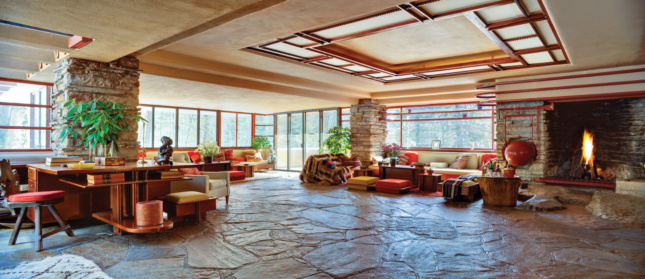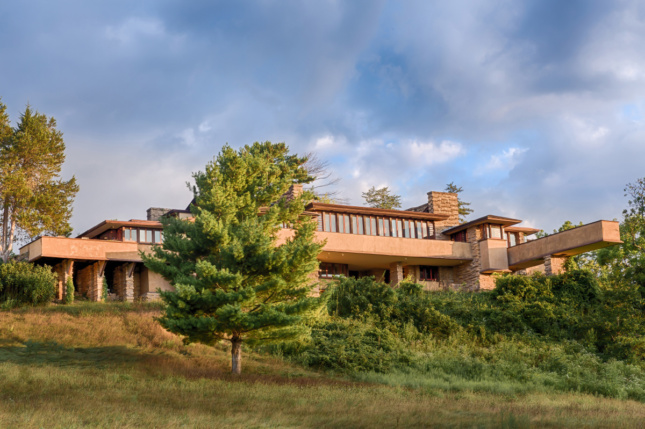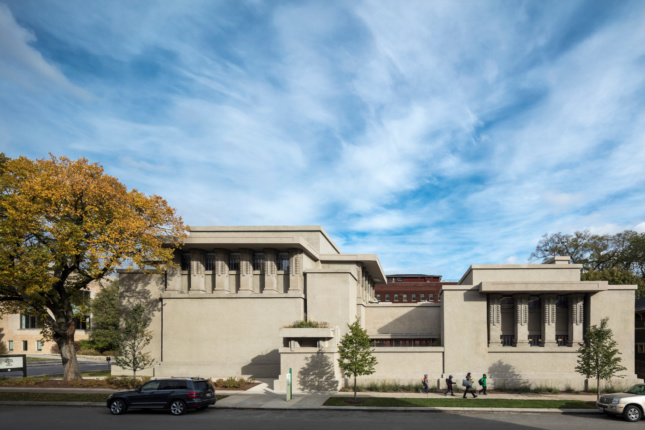A collection of Frank Lloyd Wright-designed buildings have been inscribed on the UNESCO World Heritage List as part of The 20th Century Architecture of Frank Lloyd Wright, a 382-page nomination document. The eight major works span fifty years of Wright’s career and represent the first modern architecture designation in the country on the prestigious list.
The designation was announced during the World Heritage Committee meeting on July 7 in Baku, Azerbaijan. The property consists of eight buildings, including Unity Temple (1909, Oak Park, IL), the Frederick C. Robie House (1910, Chicago, IL), Taliesin (1911, Spring Green, Wisconsin), the Hollyhock House (1921, Los Angeles, CA), the Herbert and Katherine Jacobs House (1937, Madison, Wisconsin), Taliesin West (1938, Scottsdale, Arizona), Fallingwater (1939, Mill Run, Pennsylvania), and the Guggenheim Museum (1959, New York).

UNESCO (United Nations Educational, Scientific, and Cultural Organization) recognizes landmarks or sites for having cultural, historical, or scientific relevance throughout the world. The international importance of a potential World Heritage Site celebrates places of “outstanding universal value.” The process to be added is strict, with locations needing to meet certain criteria, such as being an example of human creative genius.
Wright is widely considered to be the greatest American architect of the 20th century. In its nomination, the Frank Lloyd Wright Building Conservancy stressed Wright’s architecture as a response to functional and emotional needs, the evolving American lifestyle, and rooted in nature’s forms and principles. The Wright nomination has been in development for more than 15 years. Spearheaded by the Chicago-based Conservancy, the nonprofit organization facilitates the preservation and stewardship of the remaining structures designed by Frank Lloyd Wright.

“Each of these buildings offers innovative solutions to the needs for housing, worship, work or leisure,” wrote members of the World Heritage Committee in a press release announcing the designation. “Wright’s work from this period had a strong impact on the development of modern architecture in Europe.”
Wright’s buildings will be the 24th American site on the World Heritage List, which includes over 1,000 sites around the world. The U.S. Department of State’s press office released a statement expressing pleasure about the decision, though in 2018 the Trump administration withdrew from UNESCO, citing anti-Israel bias. A majority of American sites on the list are national parks, as well as Thomas Jefferson’s neoclassical Monticello and the University of Virginia.












